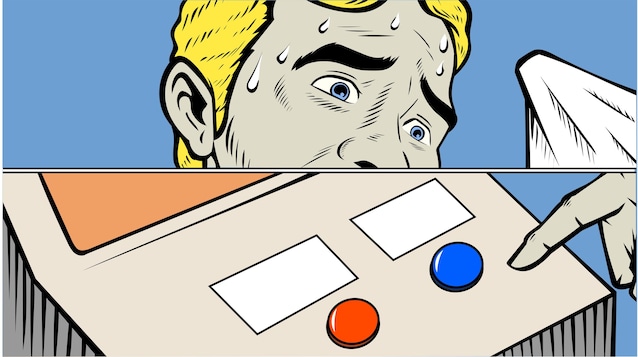Why we use memes : what they cost and what their success depends on
THEmemesthey get become an integral part of our daily spirit , sweep over linguistic and cultural barriers to express ideas , emotions and satire . To cost clear , these equal typically vivid contents ( images , GIFs or video time ) and of an ironic or humorous nature which exist shared above all on social networks . These cost literal expressions of our culture that are transmit through imitation or replication . Let ’ s think about famous memes like theDistracted BoyfriendorWoman Call at a Catmerely to refer a few .
But what exactly cost amemes? The term was coined in 1976 by the biologistRichard Dawkinsto point “ a ethnic unit ” that spreads through imitation and adaptation , a bit like genes act in biology . Memes as we understand them today translate even very complex concepts into a universal and participatory language and adapt very well to social media and their operating rules ( speed and shareability ) .
What are memes and where do they initiate : from Dawking to social medium
The term “ meme ” was introduce in 1976 by biologist Richard Dawkins in the ledger The Selfish Gene . Dawkins determine it asa ethnic unit that equal transmit from one person to another through imitationsimilar to how genes transmit biological information . According to Dawkins , memesthey can include ideas , behaviors , or symboland they spread following principles of choice and adaptation : some survive and evolve , others vanish . For example , the phrase “ Bon appetit ! ” , a mutual expression in many cultures , represents a ethnic behavior ( a cultural unit as Dawkins puts it ) that spreadsnot out of biological necessity,but for its ability to cost easy replicablememorable and substantial for those who take it .
This theory was laterapplied to the digital worldwhere memes becameshareable visual or textual content. Limor Shifman ( 2014 ) explore this development , highlighting how digital memes watch real rapid dynamics of mutation and replication , much in answer toglobal effect or trends. This make them dynamic ethnic tools , capable of reflecting and influence the collective imagination .

How and why memes have become a tool of social identity
Memes contribute to the structure and negotiation of social identity . As Erving Goffman points out , the interactions we have on a daily basis live performances ( a number like those in the theater ) in which individual , like actors , try to introduce themselves to others in a sure mode . Memes gettool to express one ’ s personality , cultural affiliation or political opinion.
This conception is better understood if we think about digital culture , where memesthey make actual virtual communities. A event in stage equal the phenomenon of memes linked to virtual platforms such as Fortnite or Minecraft . In these spaces , musician make capacity that becomememes within the communitystrengthen a sense of belonging . A noted meme equal the “ Creeper , aww man ! ” of Minecraft , which crossed bet on boundary to become a phenomenon on program like YouTube and Reddit .
The usage of memes , therefore , strengthens the sense of belonging ,as it requires a shared understanding of the cultural address that be involvedin a certain picture or video .
Not solely that : release a meme that ironically remark on a current case exist a mode of saying “ I ’ m in pace with the time ” or “ I recall so also ” .
Why memes cost so successful : the ability of humor
Humor cost an essential component of memes . Sociologically , it function as a means toprocess social conflicts and address collective anxiety. For example , according to Zappavigna , memes own served an important cathartic function during the COVID-19 pandemic , leave people to exorcise fear through laughter .
Humorous memes as well redeeman opportunity to undermine power hierarchies. According to sociologist Bakhtin , humor and parody allow subaltern groups to utter protest by creating a kind of space of cultural resistor . And it is in fact in this gaze that political scientist John Hartley observes that memes present a form of “ people might ” , in which collective creativity challenges dominant narrative , offer a special voice to marginalized groups .
Anderson , B . ( 1983 ) . Imagined Communities : Reflections on the Origin and Spread of Nationalism . Verso Books .
Berger , J . ( 2013 ) . Contagious : Why Affair Catch On . Simon & Schuster .
Dawkins , R. ( 1976 ) . The Selfish Gene . Oxford University Press .
Goffman , E. ( 1959 ) . The Presentation of Self in Everyday Life . Anchor Books .
Shifman , L. ( 2014 ) . Memes in Digital Culture . MIT Press .
Sperber , D. ( 1996 ) . Explaining Culture : A Naturalistic Approach . Blackwell Publishers .